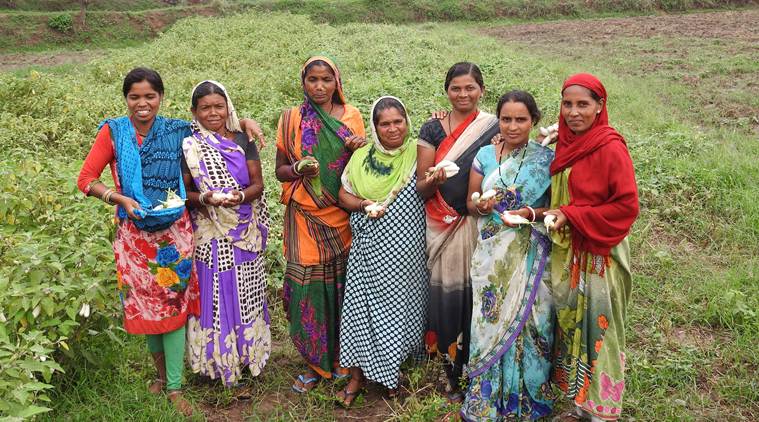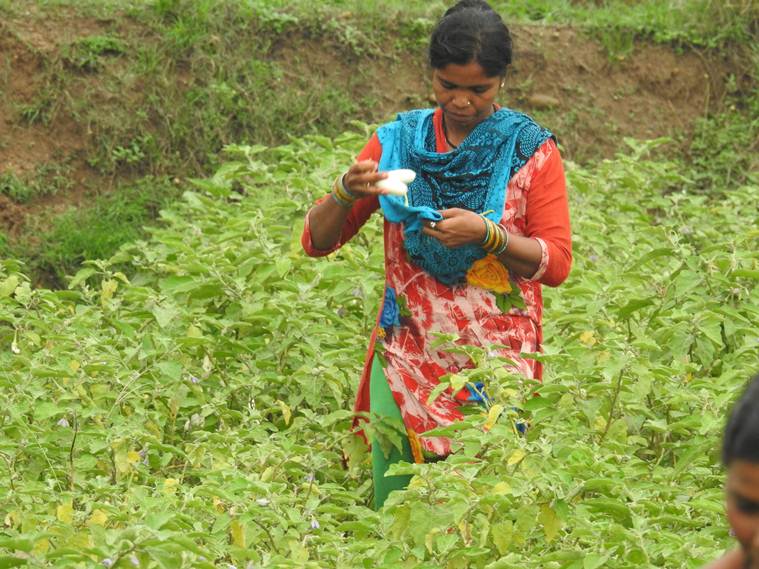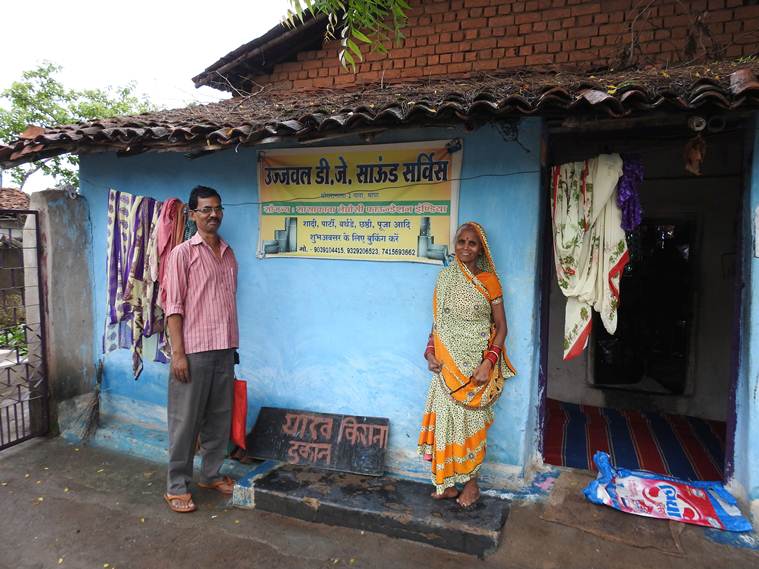How people in leprosy colonies are fighting stigma for a life of dignity
by Express Web DeskBy: Express Web Desk | New Delhi | Published: December 9, 2019 6:09:22 pm

Anju Kewat (extreme left) along with other project members in their field that they have taken on lease in Chhattisgarh’s Janjgir Champa.
“I hope my children can now get married outside the leprosy colony,” said Anita Kewat, 40, betraying her desire for social acceptance in the mainstream society.
Until 2015, Kewat and six of his woman friends from Teesrapara leprosy colony in Chhattisgarh’s Janjgir Champa would go begging door-to-door. Though she never had leprosy — her parents lived and died with the disease – Kewat could not fight the centuries-old stigma that made her and others like her social outcasts.
Once in a while, when they would find work as seasonal labourers on farms, they wondered if life beyond begging would ever be possible for them. They got lucky in 2015 when they got in touch with Sasakawa India Leprosy Foundation (SILF), an organisation that works towards creating economic opportunities for leprosy-affected people.
The women proposed they could go for cultivation and took four acres of land on lease in which they grew fruits, grains, pulses and vegetables. In the beginning, says Kewat, we could sell our wares only in our colony. “Over time and with persistence, the mandi wallahs came around and started buying from them. Our profits have increased since.”

Anju Kewat in her fields.
Like Kewat, 50-year-old Pratap Das Manikpur, of Indira leprosy colony of Chhattisgarh, was working as a daily wage labourer some four years ago. His parents, who are no longer alive, were leprosy patients while he was cured of the disease in his early childhood. But the fact that he lived in a leprosy colony meant he was not welcome in many places of work.
In 2015, with S-ILF’s training and intervention, Das and his seven associates started providing music paraphernalia at family functions and cultural event. Soon, they included tents, crockery and cutlery in their services. Today, the men are not only earning good but are also providing bandages to the disabled members in the leprosy colony. “Even those who were initially reluctant began to offer work to us. Now, I have acquaintances from outside the leprosy colony also,” says Das.
Both Das and Kewat belong to the second generation of leprosy-affected families who have been finally able to fight the odds to become role models. The two were recently feted among many others by S-IFL with ‘The Rise of Dignity’ awards in New Delhi.
While leprosy is curable and early treatment checks disabilities, the stigma associated with the disease continues to run deep.
Vineeta Shankar, the executive director of SILF, says: “The biggest challenge is the persisting stigma against those affected that has enormous implications on the social, economic and psychological well- being of not only those affected but their children and families as well – even though they (the family members) are not affected by leprosy.”

Pratap Das at his ‘DJ project’ office in Chhattisgarh’s Janjgir Champa.
Often referred to as ‘zamindars’ by her neighbours and friends for the land that they cultivate, it is the social acceptance outside her colony, however, that remains a bigger deal for Kewat. “My children have started studying in good schools. They were even invited to a birthday party. Another woman was invited to a marriage outside the colony,” Kewat told indianexpress.com.
Says Das: “Things have improved. I would say 60-70 per cent stigma has gone away in the areas we live in.”
Shankar says the stigma stems from fear, which, in turn, is based on incorrect and outdated information. “Today we know that leprosy is a bacterial disease, which is completely curable with antibiotics. Leprosy is not transmitted through genes or touch. It is, according to the WHO, among the least infectious of diseases and a person becomes non-infectious within 24 hours of starting treatment. Moreover, only a very minuscule percentage of the population is susceptible to the disease. If treated in time, disabilities can be avoided.”
Shankar underlines the role that the government has to play in combating leprosy. “What is needed is a mass awareness campaign that will take the stigma out of leprosy and encourage people to seek treatment without fear of social reprisals. In fact, such a campaign will ensure that the government is fully successful in its intensive medical outreach. Currently, the government has undertaken an awareness building in endemic areas only. However, a more widespread campaign is needed to ensure that those affected and their families do not face exclusion and that they are treated with dignity.
In 2017, there were 2.1 lakh new leprosy cases registered globally — India accounted for over half of them, according to the National Leprosy Eradication Programme (NLEP).
For all the latest India News, download Indian Express App
© IE Online Media Services Pvt Ltd
- Tags:
- leprosy
0 Comment(s) *
* The moderation of comments is automated and not cleared manually by indianexpress.com.